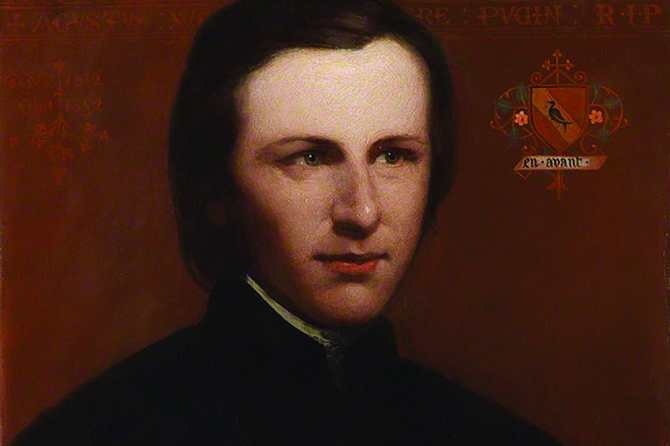 Facebook
Facebook
 X
X
 Instagram
Instagram
 TikTok
TikTok
 Youtube
Youtube

Augustus Pugin
The greatest privilege possessed by man is to be allowed, while on earth, to contribute to the glory of God: a man who builds a church draws down a blessing on himself both for this life and that of the world to come, and likewise imparts under God the means of every blessing to his fellow creatures; hence we cannot feel surprised at the vast number of religious buildings erected by our Catholic forefathers in the days of faith, or at their endeavours to render those structures, by their arrangement and decoration, as suitable as their means could accomplish for their holy and important destination. It must have been an edifying sight to have overlooked some ancient city raised when religion formed a leading impulse in the mind of man, and when the honour and worship of the Author of all good was considered of greater importance than the achievement of the most lucrative commercial speculation. There stood the mother church, the great cathedral, vast in height, rising above all the towers of the parochial churches which surrounded her…. The great object I have in directing your attention to such a Catholic city is to illustrate the principle of decorative propriety in ecclesiastical buildings. We have here various edifices of various dimensions, various degrees of richness, various in arrangement, yet each bears on its very face the stamp of Catholic; cathedral or abbey, church or oratory, they all show that they are dedicated to the one true faith, raised by men actuated by one great motive, the truly Catholic principle of dedicating the best they possessed to God.
Augustus Pugin (1812-1852) was an English architect and played an essential role in the Gothic Revival in architecture. Among his most important works is the Palace of Westminster in London and its clock tower which houses Big Ben. Pugin also designed renowned buildings, including many churches, in Ireland and Australia. In 1834, he converted to Catholicism (his father, a refugee from the French Revolution, became Anglican when he came to England, likely as a way to gain employment, as Catholics were discriminated against at that time), and while his reputation suffered from what many historians held to be unfair attacks by art critic John Ruskin, his ideas were carried forward by the next generation of architects who had been attracted to the Gothic style which he helped champion.


Augustus Pugin
The greatest privilege possessed by man is to be allowed, while on earth, to contribute to the glory of God: a man who builds a church draws down a blessing on himself both for this life and that of the world to come, and likewise imparts under God the means of every blessing to his fellow creatures; hence we cannot feel surprised at the vast number of religious buildings erected by our Catholic forefathers in the days of faith, or at their endeavours to render those structures, by their arrangement and decoration, as suitable as their means could accomplish for their holy and important destination. It must have been an edifying sight to have overlooked some ancient city raised when religion formed a leading impulse in the mind of man, and when the honour and worship of the Author of all good was considered of greater importance than the achievement of the most lucrative commercial speculation. There stood the mother church, the great cathedral, vast in height, rising above all the towers of the parochial churches which surrounded her…. The great object I have in directing your attention to such a Catholic city is to illustrate the principle of decorative propriety in ecclesiastical buildings. We have here various edifices of various dimensions, various degrees of richness, various in arrangement, yet each bears on its very face the stamp of Catholic; cathedral or abbey, church or oratory, they all show that they are dedicated to the one true faith, raised by men actuated by one great motive, the truly Catholic principle of dedicating the best they possessed to God.
Augustus Pugin (1812-1852) was an English architect and played an essential role in the Gothic Revival in architecture. Among his most important works is the Palace of Westminster in London and its clock tower which houses Big Ben. Pugin also designed renowned buildings, including many churches, in Ireland and Australia. In 1834, he converted to Catholicism (his father, a refugee from the French Revolution, became Anglican when he came to England, likely as a way to gain employment, as Catholics were discriminated against at that time), and while his reputation suffered from what many historians held to be unfair attacks by art critic John Ruskin, his ideas were carried forward by the next generation of architects who had been attracted to the Gothic style which he helped champion.
Comments